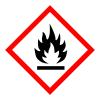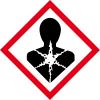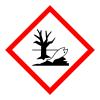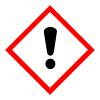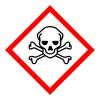Occupational Health: Workplace Chemical Exposure Risk Profile
The Chemicals in Workplace dashboard displays the chemicals that workers in different industries are potentially exposed to while working. It also shows the industries at risk. You can zoom in or zoom out (with the substance ranking filter) to select the number of chemicals or industries you want to visualize. Due to the cancer-causing risk of some of the chemicals, the carcinogenic group filter was created to visualize the chemicals or industries by the levels of classifications of the cancer-causing risk.
Return to the Occupational Health Data and Publications page
How to navigate the Chemicals in the Workplace dashboard
By default you'll see the chemicals most frequently detected during Occupational Safety and Health Association (OSHA) inspections. From the default view, you can:
- Use the drop-down menus to narrow your view.
- Slide the Substance Ranking to zoom in and out on the data. For example, moving the two arrows to positions 1 and 10 would show the top 10 most commonly detected chemicals.
- Use the health effect filter to select a specific health effect to view. Health effect (HE) is defined as the principal effect(s) of the exposure to the chemical or substance on the body. Once a health effect is selected, the filter next to it will be automatically updated to the name selected and you can use the drop-down menu to pick one of the three options (Yes, No, or No documentation).
Note: This dashboard uses all available federal Occupational Safety and Health Administration (OSHA) data (not just data from Wisconsin).
Chemicals in the Workplace dashboard
*An asterisk on this dashboard means there no data were available. For example, Crystalline Silica does not have any synonyms, so the tooltip reads: "Crystalline Silica also known as *, which was ranked..."
Note on these data: OSHA compliance officers often take and analyze samples when monitoring worker exposures to chemical hazards. The information in this dashboard is based on the data OSHA collects in the course of those investigations. These data do not include ongoing investigations or open citations. See the technical notes section (below) to understand how and why data are selected.
See also: OSHA's Chemical Exposure Health Data.
More information about chemicals
This section provides information about some key chemicals in the data, and links to information on many more occupational chemicals.
(Organized from most common to least)
Iron and Iron Compounds:
Lead:
- Health hazard, environmental hazard
- Learn more about lead.
Manganese (fume):
- Flammable, irritant, environmental hazard
- Learn more about manganese.
Copper (fume):
- Environmental hazard
- Learn more about copper.
Zinc and Zinc compounds:
- Flammable, environmental hazard
- Learn more about zinc.
Crystalline Silica:
- Health hazard
- Learn more about silica.
Chromium (VI):
- Irritant, health hazard, environmental hazard
- Learn more about chromium VI.
Cadmium:
- Flammable, acute toxic, health hazard, environmental hazard
- Learn more about cadmium.
Chromium, Metal and Insoluble Salts:
- Irritant, health hazard, environmental hazard
- Learn more about chromium.
Arsenic, Inorganic:
- Acute toxic, environmental hazard
- Learn more about arsenic.
Asbestos, All Forms:
- Health hazard
- Learn more about asbestos.
Methylene Chloride:
- Health hazard
- Learn more about methylene chloride.
Find general information on over a million chemicals by searching CompTox.
Find more specific information about chemicals using the PubChem database.
Here you can find information on how chemicals are used.
Search for safety information about a chemical among the ICSCs. These are hosted by the International Labor Organization and provided in multiple languages.
There are two ways to find the Right To Know Hazardous Substance Fact Sheets. You can:
- Find a chemical using an alphabetical index to learn about its occupational uses, hazards, worker protection requirements, and cleanup.
- Search the Right to Know Hazardous Substance database to find the same information if you don't want to find it alphabetically.
The National Institute for Occupational Safety and Health (NIOSH) Pocket Guide to Chemical Hazards (NPG) informs workers, employers, and occupational health professionals about workplace chemicals and their hazards. Access the NPG in one of three ways:
- Use the NIOSH Pocket Guide web search.
- Download the NIOSH Pocket Guide app for your Apple or Android device.
- Download a PDF version of the NIOSH Pocket Guide.
Data sources
The primary data source was Chemical Exposure Health Data extracted on a five-year rolling basis. This dataset was linked to the Alphabetic Index of OSHA Occupational Chemical Database by the Integrated Management Information System (IMIS) substance code number to obtain the chemical abstracts service (CAS) number as well as the chemical’s synonyms. The IMIS substance code number is the is the substance code assigned by OSHA to each substance.
Data cleaning
We excluded the following testing records:
- Blank samples.
- Self-sampling records by OSHA compliance officers.
- Technical assistance to other federal agencies (also known as other agency technical assistance data). This means the following establishments were excluded: United States Department of Agriculture (USDA), US Department of Defense (USDOD), US Department of Labor (USDOL), US Immigration and Customs Enforcement, US Department of Navy, US Army Material Command, US Air Force, US Army, US Border Patrol, US Department of Defense, Homeland Security, Justice, Treasury, Veterans Affairs, Cost Guards, Health and Human Services.
- Specific substances: % combustible dust, boiling point range, combustible material, endotoxins, explosibility, explosion severity, fecal coliform, flash point, gravimetric determination, ignitable, ionizing radiation, material examination, maximum normalized Dp/Dt, metalworking fluid – gravimetric analysis, microorganisms, moisture content, particulates, Ph determination, sample weight, soil.
Data visualization
Chemicals by industry: frequency table of chemicals
Industries at risk: frequency table of deduplicated by inspection number, establishment and substance.
Suggested citation: Wisconsin Dept. of Health Services, Division of Public Health, Office of Health Informatics and Bureau of Environmental and Occupational Health. Chemicals In the Workplace Dashboard, accessed MM/DD/YYYY.

